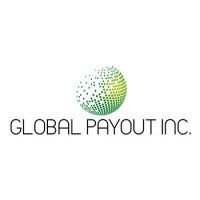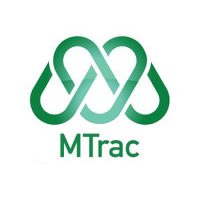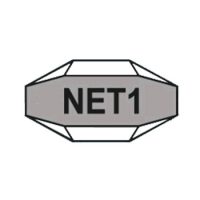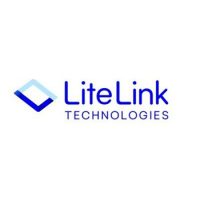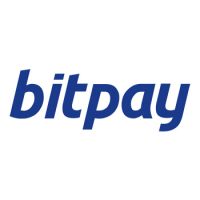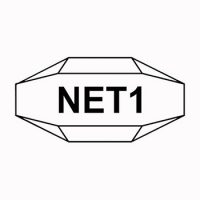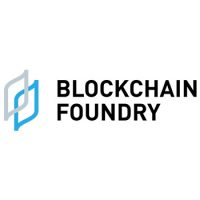Blockchain Press Releases
Asset Performance Management Market worth $4.7 billion by 2028 – Exclusive Report by MarketsandMarkets™
CHICAGO, Aug. 17, 2023 /PRNewswire/ — Predictive analytics, AI, and IoT will shape the Asset Performance Management (APM) market in the future by providing precise maintenance forecasts and data-driven decisions. APM will change as a result of the adoption of the cloud, the development of digital twins, and a focus on sustainability. Data security and cross-functional cooperation will be crucial in maximising asset performance and operational effectiveness.
The Asset Performance Management Market size is expected to grow from USD 2.9 billion in 2023 to USD 4.7 billion by 2028 at a Compound Annual Growth Rate (CAGR) of 9.9% during the forecast period, according to MarketsandMarkets. Demand for making informed business decisions with predictive asset maintenance is likely to boost the adoption of asset performance management globally.
Browse in-depth TOC on “Asset Performance Management Market”
287 – Tables
56 – Figures
265 – Pages
Download PDF Brochure @ https://www.marketsandmarkets.com/pdfdownloadNew.asp?id=72801714
Scope of the Report
|
Report Metrics |
Details |
|
Market size available for years |
2019–2028 |
|
Base year considered |
2022 |
|
Forecast period |
2023–2028 |
|
Forecast units |
Value (USD Million/Billion) |
|
Segments covered |
Component, Deployment Type, Organization Size, and Vertical |
|
Regions covered |
North America, Europe, Asia Pacific, Middle East & Africa, and Latin America |
|
Companies covered |
AVEVA, SAP, GE Digital, IBM, ABB, Emerson, Bentley Systems, Rockwell Automation, Fluke, DNV, Siemens Energy, Hexagon, Oracle, Honeywell, Yokogawa, SAS AB, Arms Reliability, Tenna, MaintainX, Nexus Global. Synopsys, Detechtion Technologies, UpKeep, MentorAPM, Fracttal, Prometheus Group, MicroAI, IPS Intelligent Process Solutions, Qualer, Plasma, VROC, and Operational Sustainability |
By solutions, the predictive asset management segment to grow at the highest CAGR during the forecast period.
Predictive asset maintenance is a type of maintenance that monitors the condition of assets using sensors. These sensors supply real-time data, which can be used to predict the timeline for asset maintenance, preventing equipment failure. It is a method used for preventing asset failures by analyzing the production data to identify patterns and predict issues before occurrence. Predictive asset maintenance further allows the maintenance frequency to be as low as possible to prevent unplanned reactive maintenance without incurring costs associated with performing several preventive maintenance activities. Predictive Asset Analytics helps organizations gain the highest return on critical assets by supporting PdM programs with early warning detection of equipment issues ahead of the existing operational alarms.
Request Sample Pages @ https://www.marketsandmarkets.com/requestsampleNew.asp?id=72801714
By vertical, manufacturing vertical is expected to hold the largest market share in 2023.
Asset-intensive organizations across the manufacturing vertical with heavy machinery are seeking to make their operations more efficient, reliable, and safer. Deploying AI and the IIoT within a process manufacturing environment can deliver a number of business benefits for companies with asset performance management capabilities. More manufacturers are adopting digital transformations through IIoT technology, with the move from metrics to analytics leading the way. The manufacturing sector has seen a variety of new analytics applications launched over the past three to five years, including a strong focus on asset performance management and other maintenance-related processes. Asset performance management solutions provide near real-time visibility into the condition of each industrial asset, which enables maintenance teams to minimize downtime.
By Region, Asia Pacific is expected to grow at the highest CAGR during the forecast period.
Asia Pacific is among the major digital hubs of the world. Businesses in the region have been quick to identify the benefits of cloud technology as a facilitator of digital transformation. Countries such as China, Japan, Australia, Singapore, India, and Indonesia are leading this technology adoption, which includes embracing new-age technologies such as AI, edge, IIoT, analytics, and cloud. According to the Global System for Mobile Communications Association (GSMA), countries in Asia Pacific have established frameworks on a national level, recognizing the potential of Industry 4.0 to help prepare economic structures for greater productivity and resilience. This will be crucial in the efforts by governments to stimulate economic recovery and build resilient economies for the future. Most government agencies and industry players expect Industry 4.0 objectives to be delivered within the next five years. This will rely on effective regulatory frameworks, such as making a new spectrum available for enhanced connectivity and increasing innovations in new solutions leveraging AI, IIoT, ML, AR, and digital twin technologies.
Top Key Companies in Asset Performance Management Market:
Some of the key players operating in the Asset Performance Management Market are – AVEVA (UK), SAP (Germany), GE Digital (US), IBM (US), ABB (Switzerland), Emerson (US), Bentley Systems (US), Rockwell Automation (US), Fluke (US), and DNV (Norway).
Recent Developments:
- In January 2023, Schneider Electric acquired AVEVA. This deal would enable both the entities a holistic approach to digital transformation across industrial operations, while reducing energy, carbon, and resource intensity. While AVEVA will henceforth be wholly owned and part of Schneider Electric, it is intended that AVEVA’s business autonomy and future R&D investment will be preserved going forward, thereby helping to meet increasing demand for a stronger portfolio of solutions.
- In July 2021, GE Digital partnered with Airbus and Delta TechOps to bring support with its best-in-class predictive analytics software. With GE Digital’s added analytics capabilities and systems portfolio, covering Airbus and non-Airbus OEM aircraft, airlines will further benefit from cross-fleet health monitoring and diagnostics, reliability analysis, and PdM analytics.
- In June 2021, Bentley Systems recently acquired SPIDA Software, developers of specialized software for the design, analysis, and management of utility pole systems. The integration of SPIDA within Bentley Systems OpenUtilities engineering software, PowerView, and grid digital twin cloud services will help address the challenges of transitioning to new renewable energy sources, including for electric vehicle charging, of joint usage of utility poles to support broadband networks’ 5G expansion, and of modernizing and hardening the electric grid to maintain reliability and resilience.
- In May 2021, AVEVA partnered with Maire Tecnimont Group. This partnership will extend usage of AVEVA’s Asset Performance Management (APM) solutions across the Maire Tecnimont Group, globally, thereby enhancing plant operability and lowering maintenance costs. This in turn will deliver increased information availability empowering better, more informed decision-making, and subsequently improving overall business performance. As part of the agreement, the two companies will work together over a year on a defined number of customer projects so as to promote the application of predictive maintenance technology for critical plant assets.
Inquiry Before Buying @ https://www.marketsandmarkets.com/Enquiry_Before_BuyingNew.asp?id=72801714
Asset Performance Management Market Advantages:
- By examining current data, past trends, and performance metrics, APM systems assist in foreseeing and averting equipment breakdowns. This pro-active strategy reduces unscheduled downtime, raises asset availability, and boosts overall operational effectiveness.
- APM assists organisations in decreasing operational and maintenance costs by minimising downtime, eliminating unexpected failures, and optimising maintenance schedules. Businesses are able to switch from reactive maintenance to techniques for predictive and preventive maintenance, which eventually results in cost savings.
- APM gives organisations insights into asset performance, allowing them to spot underperforming assets and take appropriate action. This leads to better resource allocation, enhanced production capacity, and improved asset utilisation.
- Organisations can track the performance and health of their assets with the aid of APM solutions. Organisations can increase the lifespan of their assets and postpone the need for pricey replacements or significant repairs by spotting and fixing problems early on.
- APM tools can aid in making sure that assets are maintained in line with industry standards and safety laws. Businesses may prevent accidents and stay out of legal trouble by recognising potential safety concerns and assuring compliance.
- APM solutions optimise maintenance schedules using data-driven insights. This saves time and resources by reducing pointless maintenance tasks and extending the intervals between significant maintenance operations.
- Data analytics and visualisations are offered by APM platforms to support data-driven decision-making. Decisions regarding when to carry out maintenance, when to replace assets, and how to deploy resources efficiently can be made by organisations.
- Real-time asset monitoring is made possible by the integration of APM solutions with Internet of Things (IoT) gadgets and sensors. A thorough understanding of asset performance and health is provided by the analysis of this data coupled with previous data.
Report Objectives
- To define, describe, and forecast the global Asset Performance Management Market based on component (solutions and services), deployment type (on-premises and cloud), organization size (large enterprises and SMEs), vertical (energy & utilities, manufacturing, government & defense, chemicals, telecommunications, healthcare & pharmaceuticals, consumer goods, food & beverages, and other verticals), and region.
- To forecast the market size of the five major regional segments: North America, Europe, Asia Pacific, the Middle East & Africa, and Latin America
- To provide detailed information related to the major factors influencing the growth of the market (drivers, restraints, opportunities, and challenges)
- To strategically analyze macro and micromarkets with respect to growth trends, prospects, and their contributions to the overall market
- To analyze industry trends, patents & innovations, and pricing data related to the Asset Performance Management Market.
- To analyze the opportunities in the market for stakeholders and provide details of the competitive landscape for major players.
- To profile key players in the market and comprehensively analyze their market share/ranking and core-competencies.
- To track and analyze competitive developments, such as mergers & acquisitions, new product launches, product enhancements, and partnerships & collaborations in the market.
Browse Adjacent Markets: Software and Services Market Research Reports & Consulting
Related Reports:
Hyperscale Computing Market – Global Forecast to 2028
Blockchain Identity Management Market – Global Forecast to 2028
Composable Applications Market – Global Forecast to 2028
Data Catalog Market – Global Forecast to 2027
Human Capital Management Market – Global Forecast to 2026
About MarketsandMarkets™
MarketsandMarkets™ is a blue ocean alternative in growth consulting and program management, leveraging a man-machine offering to drive supernormal growth for progressive organizations in the B2B space. We have the widest lens on emerging technologies, making us proficient in co-creating supernormal growth for clients.
The B2B economy is witnessing the emergence of $25 trillion of new revenue streams that are substituting existing revenue streams in this decade alone. We work with clients on growth programs, helping them monetize this $25 trillion opportunity through our service lines – TAM Expansion, Go-to-Market (GTM) Strategy to Execution, Market Share Gain, Account Enablement, and Thought Leadership Marketing.
Built on the ‘GIVE Growth’ principle, we work with several Forbes Global 2000 B2B companies – helping them stay relevant in a disruptive ecosystem. Our insights and strategies are molded by our industry experts, cutting-edge AI-powered Market Intelligence Cloud, and years of research. The KnowledgeStore™ (our Market Intelligence Cloud) integrates our research, facilitates an analysis of interconnections through a set of applications, helping clients look at the entire ecosystem and understand the revenue shifts happening in their industry.
To find out more, visit www.MarketsandMarkets™.com or follow us on Twitter, LinkedIn and Facebook.
Contact:
Mr. Aashish Mehra
MarketsandMarkets™ INC.
630 Dundee Road
Suite 430
Northbrook, IL 60062
USA: +1-888-600-6441
Email: [email protected]
Research Insight: https://www.marketsandmarkets.com/ResearchInsight/asset-performance-management-market.asp
Visit Our Website: https://www.marketsandmarkets.com/
Content Source: https://www.marketsandmarkets.com/PressReleases/asset-performance-management.asp
Logo: https://mma.prnewswire.com/media/660509/MarketsandMarkets_Logo.jpg
![]() View original content:https://www.prnewswire.co.uk/news-releases/asset-performance-management-market-worth-4-7-billion-by-2028—exclusive-report-by-marketsandmarkets-301903391.html
View original content:https://www.prnewswire.co.uk/news-releases/asset-performance-management-market-worth-4-7-billion-by-2028—exclusive-report-by-marketsandmarkets-301903391.html

Blockchain
Ethereum ETFs Aren’t Blockchain But Is A Revolutionary Tech: Top 6 Amazing Reasons To Invest In Them
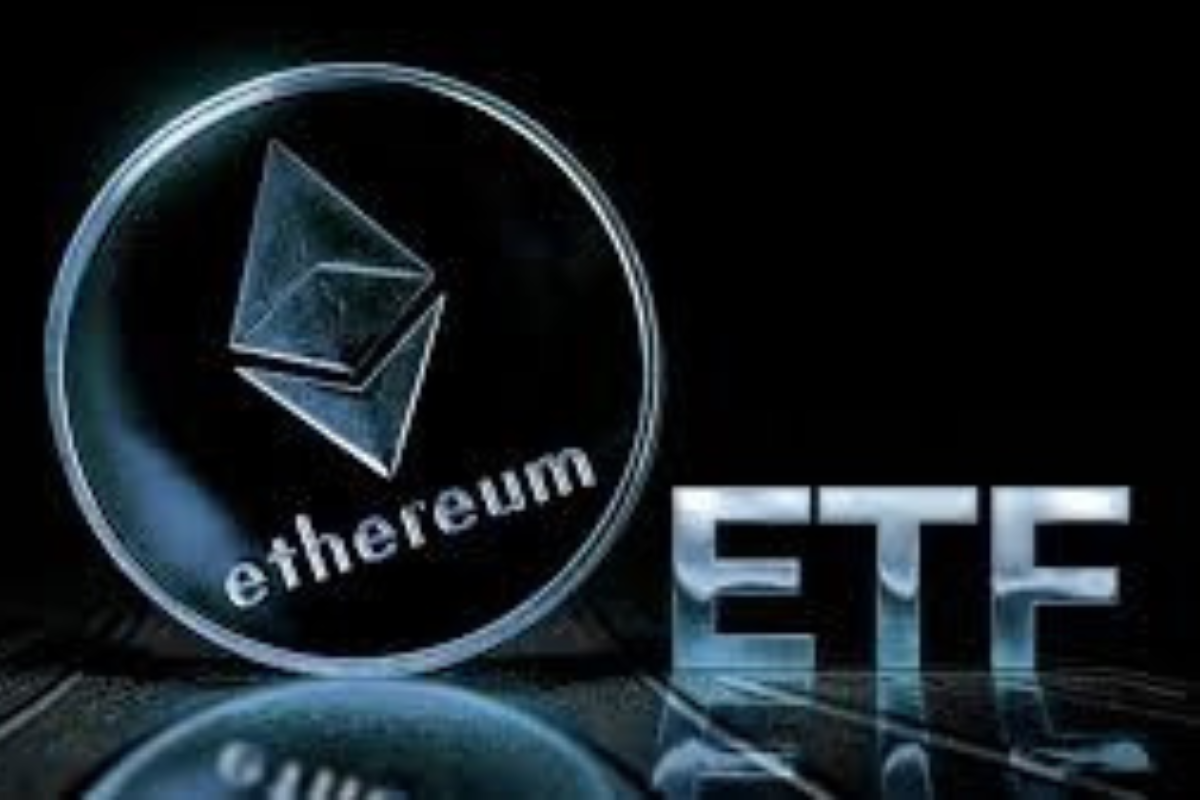
The financial landscape is rapidly evolving, with the integration of blockchain technology and cryptocurrencies becoming more prominent. Among these, Ethereum ETFs (Exchange-Traded Funds) have emerged as a significant investment vehicle, offering exposure to the Ethereum blockchain’s native cryptocurrency, Ether (ETH), without requiring direct ownership. However, it’s crucial to understand that Ethereum ETFs are distinct from the blockchain itself and serve different purposes in the investment world.
Understanding Ethereum and ETFs
Ethereum: A decentralized platform that enables the creation and execution of smart contracts and decentralized applications (dApps). It operates using its cryptocurrency, Ether (ETH), which fuels the network.
ETF (Exchange-Traded Fund): A type of investment fund that holds a collection of assets and is traded on stock exchanges. ETFs can include various asset classes, such as stocks, commodities, or bonds.
Ethereum ETFs: The Intersection of Traditional Finance and Cryptocurrency
An Ethereum ETF provides a way for investors to gain exposure to the price movements of Ether without directly purchasing the cryptocurrency. This is achieved through an ETF structure, where the fund holds assets linked to the value of Ether, and investors can buy shares of the ETF on traditional stock exchanges.
Key Features of Ethereum ETFs:
- Indirect Exposure: Investors gain exposure to Ether’s price changes without needing to manage or store the cryptocurrency themselves.
- Regulatory Compliance: Unlike the relatively unregulated cryptocurrency market, ETFs operate under the oversight of financial regulators, offering a layer of investor protection.
- Accessibility: Ethereum ETFs are available through traditional brokerage platforms, making them accessible to a broader range of investors.
Why Invest in an Ethereum ETF?
- Diversification: Including an Ethereum ETF in a portfolio can provide exposure to the cryptocurrency market, potentially enhancing diversification beyond traditional assets.
- Convenience and Familiarity: ETFs are a familiar investment product, simplifying the process of investing in cryptocurrencies.
- Professional Management: ETF managers handle the investment decisions, including the buying and selling of assets, which can be advantageous for those less familiar with the cryptocurrency space.
- Regulatory Oversight: ETFs are subject to regulatory scrutiny, potentially offering more safety and transparency compared to direct cryptocurrency investments.
- Potential for Growth: As the cryptocurrency market grows, ETFs linked to assets like Ether may benefit from rising prices.
Key Differences Between Ethereum and Ethereum ETFs
While both are related to the Ethereum blockchain, Ethereum itself and Ethereum ETFs represent different forms of investment:
- Ethereum (ETH):
- Direct ownership of the cryptocurrency.
- Full exposure to Ethereum’s features, including staking and network participation.
- Traded on cryptocurrency exchanges.
- Highly volatile and largely unregulated.
- Ethereum ETF:
- Indirect exposure through shares representing Ether’s value.
- Traded on traditional stock exchanges under regulatory oversight.
- Offers a more stable and familiar investment structure.
- Typically lower volatility compared to direct cryptocurrency ownership.
Future Considerations for Ethereum ETFs
The approval and launch of Ethereum ETFs mark a significant milestone in bringing cryptocurrencies closer to mainstream finance. They offer a convenient and regulated means for investors to gain exposure to the growing digital assets market. However, they also come with limitations, such as not allowing direct participation in the Ethereum ecosystem’s innovations, like dApps and smart contracts.
As the market evolves, we may see more sophisticated financial products that better capture the full potential of the Ethereum ecosystem. For now, Ethereum ETFs provide a balanced option for those interested in cryptocurrency exposure within the framework of traditional finance.
In conclusion, while Ethereum ETFs offer a gateway into the world of digital assets, they should be viewed as complementary to, rather than a replacement for, direct investment in the underlying blockchain technologies. Investors should carefully consider their investment goals, risk tolerance, and the unique attributes of both Ethereum and Ethereum ETFs when making investment decisions.
Source: blockchainmagazine.net
The post Ethereum ETFs Aren’t Blockchain But Is A Revolutionary Tech: Top 6 Amazing Reasons To Invest In Them appeared first on HIPTHER Alerts.
Blockchain
Nexo Reaffirms Commitment to Data Protection with SOC 3 and SOC 2 Compliance
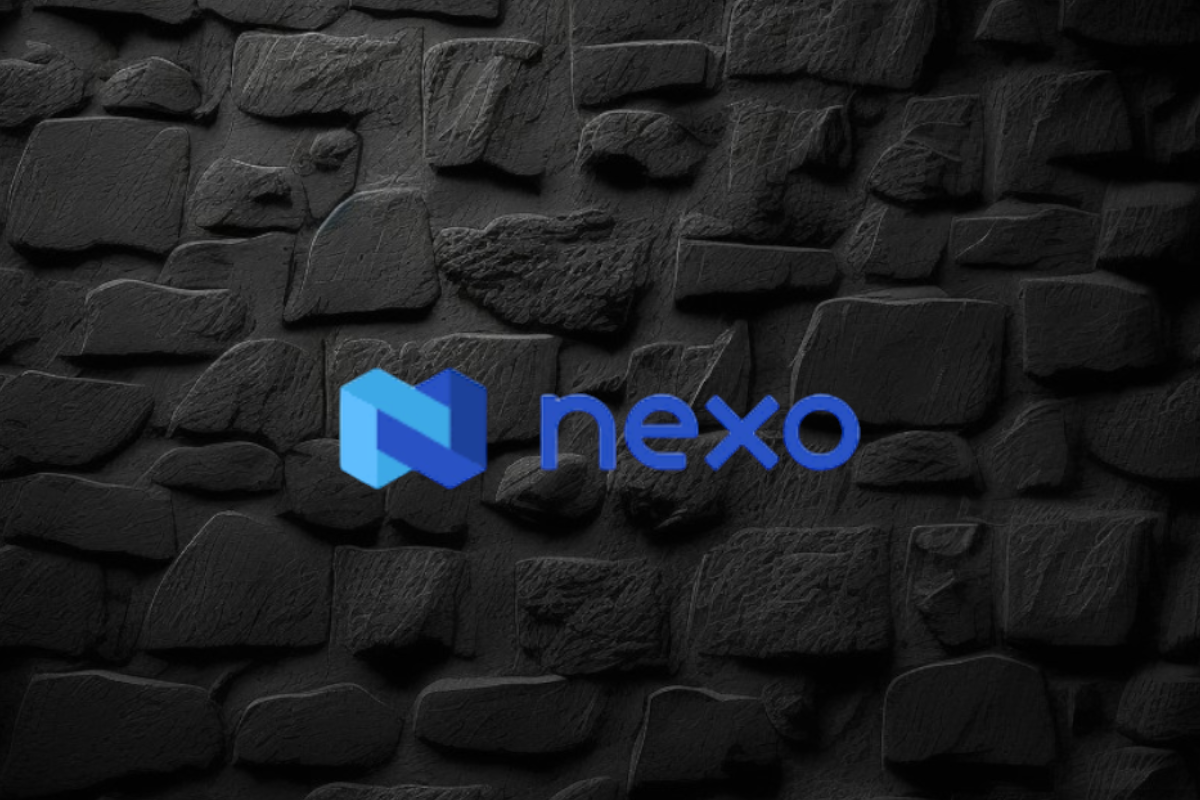
Nexo, a leading institution in the digital assets industry, has reinforced its commitment to data security by renewing its SOC 2 Type 2 audit and attaining a new SOC 3 Type 2 assessment without any exceptions. This rigorous audit process, conducted by A-LIGN, a respected independent auditor specializing in security compliance, confirms Nexo’s adherence to stringent Trust Service Criteria for Security and Confidentiality.
Key Achievements and Certifications
- SOC 2 and SOC 3 Compliance:
- SOC 2 Type 2: This audit evaluates and reports on the effectiveness of an organization’s controls over data security, particularly focusing on the confidentiality, integrity, and availability of systems and data.
- SOC 3 Type 2: This public-facing report provides a summary of SOC 2 findings, offering assurance to customers and stakeholders about the robustness of Nexo’s data security practices.
- Additional Trust Service Criteria:
- Nexo expanded the scope of these audits to include Confidentiality, showcasing a deep commitment to protecting user data.
- Security Certifications:
- The company also adheres to the CCSS Level 3 Cryptocurrency Security Standard, and holds ISO 27001, ISO 27017, and ISO 27018 certifications, awarded by RINA. These certifications are benchmarks for security management and data privacy.
- CSA STAR Level 1 Certification:
- This certification demonstrates Nexo’s adherence to best practices in cloud security, further solidifying its position as a trusted partner in the digital assets sector.
Impact on Customers and Industry Standards
Nexo’s rigorous approach to data protection and compliance sets a high standard in the digital assets industry. By achieving these certifications, Nexo provides its over 7 million users across more than 200 jurisdictions with confidence in the security of their data. These achievements not only emphasize the company’s dedication to maintaining top-tier security standards but also highlight its proactive stance in fostering trust and transparency in digital asset management.
Nexo’s Broader Mission
As a premier institution for digital assets, Nexo offers a comprehensive suite of services, including advanced trading solutions, liquidity aggregation, and tax-efficient credit lines backed by digital assets. Since its inception, the company has processed over $130 billion, showcasing its significant impact and reliability in the global market.
In summary, Nexo’s successful completion of SOC 2 and SOC 3 audits, along with its comprehensive suite of certifications, underscores its commitment to the highest standards of data security and operational integrity. This dedication positions Nexo as a leader in the digital assets space, offering unparalleled security and peace of mind to its users.
Source: blockchainreporter.net
The post Nexo Reaffirms Commitment to Data Protection with SOC 3 and SOC 2 Compliance appeared first on HIPTHER Alerts.
Blockchain
Marshall Becomes First US Senator to Walk from Controversial Crypto Bill He Co-Sponsored

Republican Senator Roger Marshall has withdrawn his support for the Digital Asset Anti-Money Laundering Act of 2023, a controversial bill he initially co-sponsored with Senator Elizabeth Warren and others. This bill, reintroduced in the Senate on July 27, 2023, aimed to bring the cryptocurrency industry into alignment with existing anti-money laundering (AML) and counter-terrorism financing (CTF) laws.
Key Provisions of the Bill
The legislation proposed stringent regulations on digital asset providers, including unhosted wallet providers, miners, and validators, by classifying them as financial institutions under the Bank Secrecy Act (BSA). It mandated these entities to adhere to BSA compliance requirements, which include extensive reporting and monitoring responsibilities. Additionally, the bill called for the Financial Crimes Enforcement Network (FinCEN) to establish regulations for reporting significant foreign digital asset holdings and to create compliance measures to address risks associated with anonymity-enhancing technologies.
Senator Marshall’s Shift
Marshall’s withdrawal from the bill comes as a surprise, particularly given his earlier criticisms of cryptocurrencies, which he has described as a “threat to national security.” This includes concerns over stablecoins like Tether potentially facilitating illegal activities and circumventing U.S. sanctions. Despite his earlier stance, Marshall’s departure from the legislation suggests a reconsideration of the bill’s implications or an alignment with broader political and industry perspectives on cryptocurrency regulation. His office has not provided a comment on the reasons for his withdrawal.
Political and Industry Reactions
The bill had garnered significant bipartisan support, with 18 co-sponsors, reflecting a broader concern in Congress over regulating the rapidly growing cryptocurrency market. However, it has also faced criticism for potentially imposing impractical compliance burdens that could stifle innovation and push crypto activities offshore. Critics argue that the bill’s stringent requirements could inadvertently drive users toward unregulated platforms, thereby undermining its intent to enhance security and regulatory oversight.
Broader Context
The withdrawal comes at a time when cryptocurrency regulation is a highly contentious issue in U.S. politics. Former President Donald Trump has promised to relax crypto regulations if elected, contrasting with the current administration’s more stringent stance. Under President Joe Biden, the Securities and Exchange Commission (SEC) and other regulatory bodies, led by figures like Gary Gensler, have taken a more rigorous approach to regulating the sector, which has drawn criticism for being overly restrictive.
Senator Marshall’s decision to step back from the Digital Asset Anti-Money Laundering Act reflects the complex and evolving nature of cryptocurrency regulation in the U.S. While the bill seeks to bring greater oversight and security to the crypto industry, it also raises concerns about regulatory overreach and its potential negative impact on innovation and privacy. As the debate continues, the U.S. legislative and regulatory landscape for cryptocurrencies remains in flux, balancing the need for security with the desire to foster technological innovation.
Source: decrypt.co
The post Marshall Becomes First US Senator to Walk from Controversial Crypto Bill He Co-Sponsored appeared first on HIPTHER Alerts.
-

 Blockchain4 days ago
Blockchain4 days agoBinance Cleared to Invest Customer Assets in US Treasury Bills: What It Means for Crypto and Dollar Dominance
-

 Blockchain4 days ago
Blockchain4 days agoDeep Custodian Limited Obtains Hong Kong TCSP License, Authorized to Provide Compliant Crypto Asset Custody Services
-

 Blockchain Press Releases2 days ago
Blockchain Press Releases2 days agoBybit Web3 Livestream Explores Cultural Meme Coins and Other Trends
-

 Blockchain3 days ago
Blockchain3 days agoBlockchain Intelligence Group adds additional modules and launches its Certified Cryptocurrency Investigator – Advanced Series
-

 Blockchain Press Releases2 days ago
Blockchain Press Releases2 days agoBybit Surges to Second Place in Derivatives Market, Solidifying Position as Global Crypto Trading Leader
-

 Blockchain3 days ago
Blockchain3 days agoBitAngels Network Hosts Blockchain Pitch Competition in Nashville
-

 Blockchain4 days ago
Blockchain4 days agoCoinW Continues Expedition Trek And Double Down On Presence At ETH-Native Events
-

 Blockchain2 days ago
Blockchain2 days agoKevin O ‘Leary Addresses Crypto Investing, Ethereum ETFs, and SEC Chair in Recent Interview






